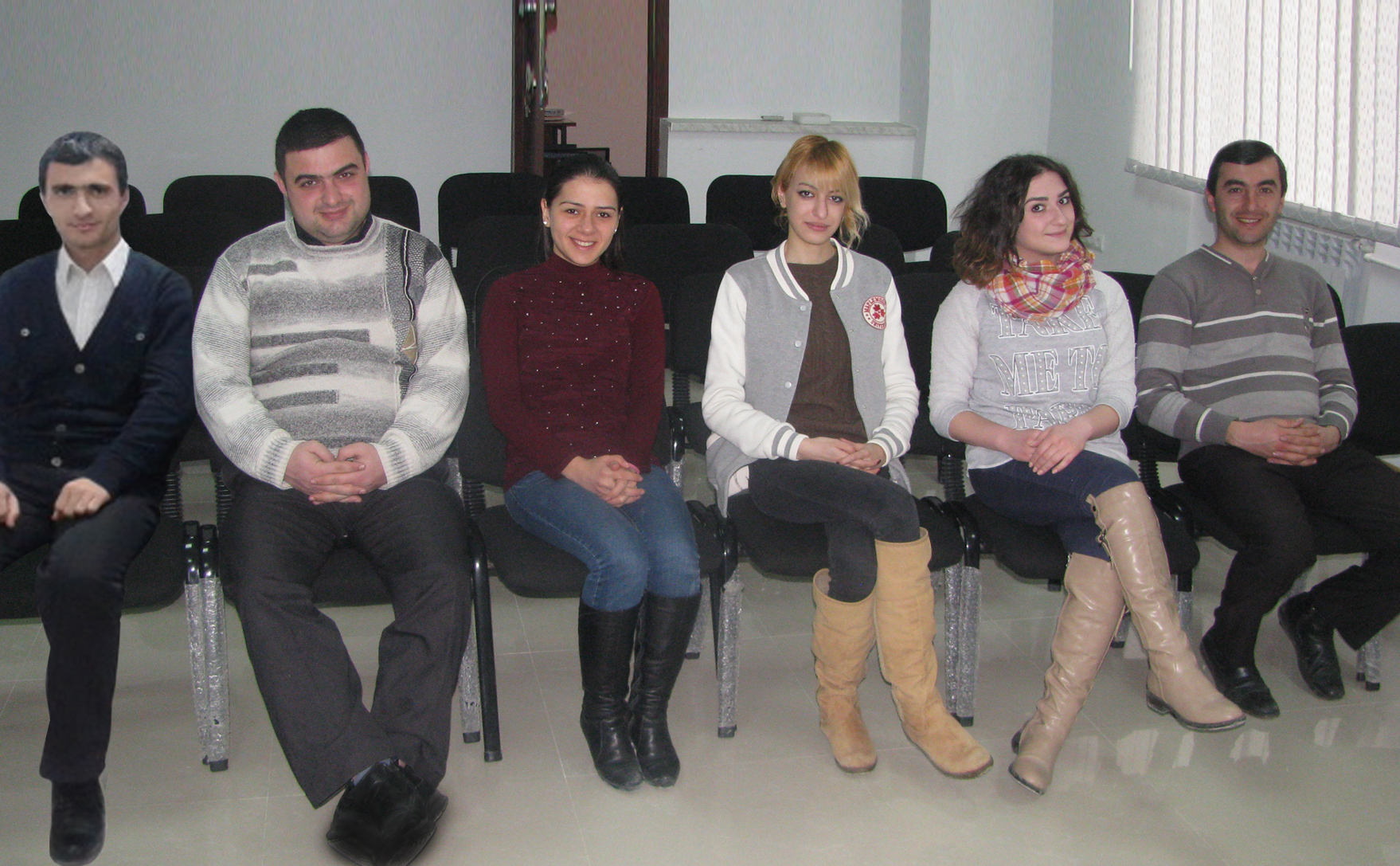

Armenia Joins World Wide Lightning Location Network
Joseph Dagdigian
February 15, 2014


Pictured left to right some of CRD’s young scientists: Ashot Hovhannisyan, Levon Vanyan, Hripsime Mkrtchyan, Hasmik Rostomyan, Tatev Sargsyan, and Tigran Karapetyan
The Cosmic Ray Division (CRD) of the Yerevan Physics Institute operates a unique geophysical network of environmental monitors. The network is unusual due to the numerous climatic zones in Armenia, with high mountains together with high mountain lakes, and frequent severe lightning storms. This network is instrumented with electric field strength meters, lightning detectors, meteorological stations, and advanced cosmic ray particle detectors designed in Armenia,. Young Armenian students and recent graduates play a key part of Armenia’s research in this field.
In the fall of 2013 the CRD joined the World Wide Lightning Location Network (WWLLN), managed by the Department of Earth and Space Sciences at the University of Washington in Seattle, Washington. This network detects very low frequency (VLF) radio waves emitted by lightning strikes. Research in this field has a number of applications in the scientific, commercial, and government sectors. It could provide a better understanding of the electric currents circulating the globe at very high altitudes, shed light on global warming and atmospheric discharges, and provide warnings of severe storms and hail for agriculture. This past summer, many Armenian farmers suffered severe hail damage to their crops.
Upon joining the WWLLN the CRD installed monitoring stations in Yerevan, on the slope of Mt. Aragats, and near Lake Sevan. Localization of lightning strikes requires the precise timing of the VLF radio signals by at least 5 monitoring stations. The geographical location of these stations is extremely important. The stations in Armenia fill a crucial void as there are no other stations for thousands of kilometers to the east or west and the nearest station to the southwest is in Tel-Aviv. Thus Armenia’s stations are extremely important. Integration of Armenia’s stations into the WWLLN will help Armenia calibrate its stations and will provide enhanced research world-wide.
As with all other CRD projects, CRD’s young scientists play an integral role in this project. Recent post-doctoral students, Levon Vanyan and Tigran Karapetyan, are already making their mark in the field, having received a number of invitations to present their important research at international scientific conferences.
Hripsime Mkrtchyan, who received her Masters degree last year, has entered the PhD program at the Yerevan Physics Institute specializing in Cosmic Ray Physics, with Yerevan Physics Institute’s director Prof. Ashot Chilingarian as her advisor. She is one of the Kirakos Vaporciyan scholars, supported by the Kirakos Vaporciyan scholarship endowment established in memory of the late Kirakos Vaporciyan by the Vaporciyan family of Michigan. Another young scholar, Hasmig Rostomyan, who recently received her master’s degree in physics, is preparing to enter the Yerevan Physics Institute PhD program in Cosmic Ray Physics this fall while continuing to work at the CRD. Two new Masters and Bachelors students from Yerevan State University, Ashot Hovhannisyan and Tatev Sargsyan, are also interning at the CRD.
|
Copyright © SCACRD
- All rights reserved.
|